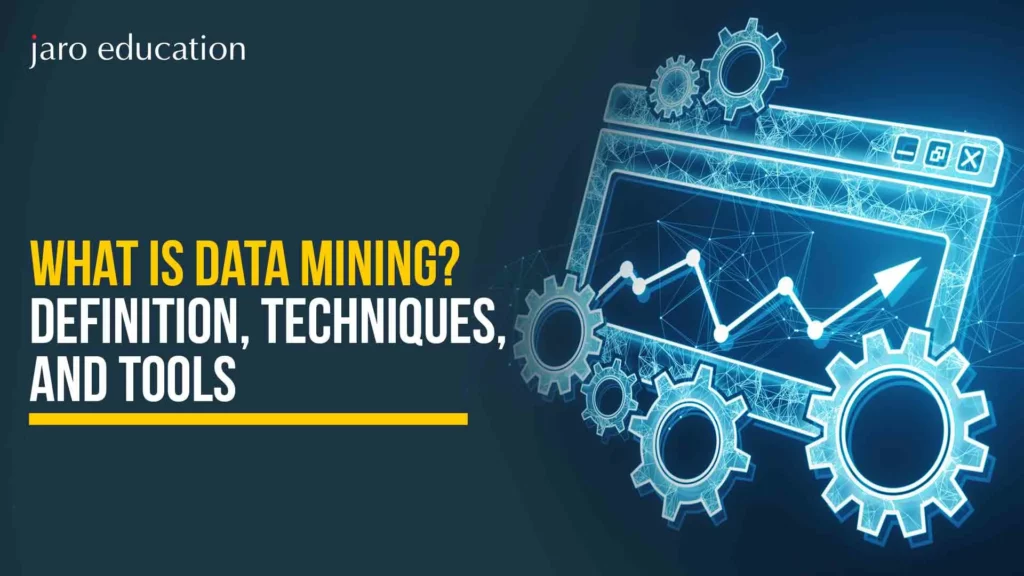Top 3 Characteristics of Top-Down and Bottom-Up Approaches
Table of Contents

- jaro education
- 5, August 2024
- 1:00 pm
Introduction
INTRODUIn the world of business finance, decision making strategies are key to a company’s success. The bottom up and top down approach are two main ways firms around the globe carry out this critical task of decision making. Knowing the main features of the bottom up and top down approaches can greatly help a company do well, work smoothly, and be more flexible. This post talks about the three main things about both the bottom up and top down approaches, giving tips for leaders and pros in the industry. The Executive Programme in Business Finance by IIM Ahmedabad gives insights into similar practices that can be adopted to optimize corporate finance management.CTION

Top-Down Approach
In the top-down approach, budgets are made by the senior management and then allocated to various departments in the organization.
Hierarchical Structure
A striking feature that distinguishes bottom up and top down approaches is the top-down approach’s hierarchical structure; hence, decisions are made at the top and filtered to the lower levels.
- Centralized Decision-Making: Decisions in a top-down approach are mostly made by high-ranking executives or management teams. Thus, this centralization helps ensure they all have a uniform understanding and implementation of the organization’s strategic vision and goals.
- Clear Chain of Command: A clear chain of command simplifies responsibility allocation and accountability. Every level in the hierarchy knows its role in carrying out decisions made from above.
- Efficient Implementation: This approach can result in more efficient policy and strategy implementation since orders flow down a well-established path, eliminating confusion and delays.
A striking feature that distinguishes bottom up and top down approaches is the top-down approach’s hierarchical structure; hence, decisions are made at the top and filtered to the lower levels.
Consistent Vision and Goals
Here’s another distinguishing feature between the bottom up and top down approaches. The top-down approach ensures consistency in organizational vision and objectives at every stage.
- Unified Objectives: With decisions being made at the summit, the whole organization works towards one set of goals. In addition, this alignment helps to keep the company’s strategic initiatives focused on what really matters and makes sense within them.
- Standardized Processes: The top-down approach also typically incorporates large-scale process standardization that aids in eliminating discrepancies within the numerous processes in the business and guarantees the organization is following the best practices at all levels.
- Predictable Outcomes: The predictability of the goals and vision can also be checked, thus enhancing the organization’s ability to measure performance against certain set milestones.
Swift Decision-Making
Due to the strict structure used in the implementation of this top-down approach, decisions are made quickly, which makes it unique in the bottom up and top down approaches.
- Quick Response: The company’s senior management can easily make decisions without involving many people, seeking approval from juniors, or consulting juniors. This may be especially beneficial when the business setting is constantly evolving and rapidly changing.
- Crisis Management: This is because, in the event of a crisis, it provides a top down approach and quick solutions which can be strategic in managing the risks in question.
- Streamlined Communication: Top-down communication is very significant as it guarantees the spread of critical information, reaching all levels of the organization with relevant actors already prepared and willing to respond.
Bottom-Up Approach
In the bottom-up approach, demand is generated by the different departments of the organization and then the suggestion is incorporated into the budget at the senior-level management.
Inclusive Participation
In the bottom-up approach, demand is generated by the different departments of the organization and then the suggestion is incorporated into the budget at the senior-level management.
- Employee Involvement: Co-creation is an important feature of the company as everyone in the organizational hierarchy is encouraged to submit their opinions and suggestions. Such participation enhances ownership and staff motivation due to a feeling of inclusion in the decision-making process.
- Collaboration and Innovation: This means the organization is likely to gain from a different perspective and creativity which will result from having employees of different levels make decisions. It is not just a concept of sharing knowledge and resolving issues, but the nature of this cooperation often results in innovative work and incremental advancement.
- Grassroots Initiatives: The bottom-up approach fosters decentralization since employees can come up with ideas and implement them provided that they are in line with the company’s objectives. This can lead to the identification of new and efficient working plans that may not have easily reached the top management through brainstorming.
Adaptive and Flexible
Another feature that distinguishes bottom up and top down approaches is that the bottom-up approach is also more flexible and adaptive which means that it is easier for the organization to meet the changes and challenges.
- Responsive to Change: The bottom up communication ensures that information about changes in the environment is easily identified and responded to because the ideas and information are coming from different levels of the organization. It can be vital in matching changing market needs and staying relevant to customers and key industry players.
- Continuous Feedback Loop: Thus, the processes and strategies are constantly revised with constant feedback between the employees and the management. Thus, enhancing adaptability allows the organization to constantly stay on the alert and be prompt in managing probable difficulties.
- Tailored Solutions: This is because, in the bottom-up approach, ideas originate from the lower ranks in an organization, and this makes them more grounded and fitting for solving the company’s issues.
Enhanced Employee Engagement
Another strength that is associated with bottom-up approach is its effectiveness in improving the level of employee involvement and satisfaction when compared between the bottom up and top down approaches.
- Empowerment: In the same way, encouraging every employee to participate in decision-making at the bottom-up increases recognition and respect within the company’s framework. The following are the benefits of the recognition of employees; Employees feel appreciated throughout their duties and hence are more satisfied in their working stations.
- Skill Development: It can be seen that engaging the employees in strategic decisions and problems fosters their skills and capacity. Such a working environment of continuous learning can be valuable to the individual and the firm as it promotes the development of the individual in his or her career.
- Reduced Turnover: Employers who have their employees engage more with their jobs and find more meaning in them are likely to have employees who will not want to leave their company. When the employees have a feeling that they are part of the organization more so when they feel committed to the organizational interests, this acts as a fuel for them to be bound to the organizational goals and objectives.
Difference Between Bottom up and Top down Approaches
To better understand the nuances between the bottom up and top down approaches, it’s essential to compare the bottom up and top down approaches directly across various dimensions:
Decision-Making Speed and Efficiency
Let’s compare the bottom up and top down approaches in terms of Decision-Making Speed and Efficiency.
- Top-Down: In the top-down approach, if decisions have to be made in the areas of organizational structure, change and communication, the process will be faster and more centralized thus being advantageous in critical circumstances. The organizational structure is also efficient in its execution of orders since the lower ranks do not question the decisions made at the higher levels.
- Bottom-Up: Despite a slower pace attributable to engagements of consensus and multiple levels of inputs, the low approach is effective because of its inclusiveness. The depth can improve the quality and legitimacy of decisions while coming with the trade-off of time.
Innovation and Creativity
Let’s compare the bottom up and top down approaches on the basis of innovation and creativity.
- Top-Down: As in the case of the above-mentioned framework, innovation in the case of adopting top-down approach may be restrained by the creativity of top management. The positive aspect is that where there is clear strategic direction coupled with vision, there is a shallow likelihood of necessary innovative thoughts coming from lower hierarchical levels.
- Bottom-Up: In terms of innovation and creativity, bottom-up approach is seen to be the most effective. This is because the employees will be able to contribute their ideas within the organization thus enriching the Organization’ resource base. It usually makes possible the achievement of more creative and progressive results as well as incremental advances.
Employee Morale and Engagement
Let’s compare the bottom up and top down approaches in terms of employee morale and engagement.
- Top-Down: In the top down approach the morale of the employee is likely to drop low, should professionals and their ideas or contribution be of no or low value to the organization. But at the same time, clarity of the directions, and consistent objectives can give a sense of orientation.
- Bottom-Up: This approach enhances the morale of the employees as they find that their opinion is appreciated and included in the management of the company. This inclusion makes individuals feel that they belong to the company and that they owe it to the company to produce good results hence improving job contentment and company loyalty.
Risk Management
Let’s compare the bottom up and top down approaches on the basis of risk management.
- Top-Down: In a fully implemented top down risk management model, risk management is mostly the function of the management. This can facilitate swift action and the adoption of decisions; however, it poses the danger of ignoring some negative outcomes mentioned by lower-ranking employees who are more in touch with the implementation process.
- Bottom-Up: The bottom up makes it easy to assess the risks since the employees of the company are engaged as they carry the implementation process. These antisocial attitudes can be visible to other PMA participants and lead to quicker risk detection and its resolution The result can be achieved collectively, although it can be quite time-consuming
Scalability and Growth
Let’s compare the bottom up and top down approaches in terms of scalability and growth.
- Top-Down: The clarity that emerges from this top-down representation facilitates scalability because it ensures unity in diversity. Employees as well as management get more clarity by working along vertical lines.
- Bottom-Up: The strengths of this viewpoint’s acceptance – its ability to adapt and change in different situations – make it particularly suitable for highly dynamic and changing cases. While it may be more challenging to maintain consistency, the approach’s ability to adapt and innovate can drive sustainable growth.

Implementing a Hybrid Approach
The bottom up and top down approach may be extremist ways and sometimes inconvenient in different contexts. Many modern organizations find value in adopting a hybrid approach that combines elements of both the bottom up and top down approaches. In this way, they make use of all the advantages offered by these two methods without sacrificing anything for either.
Strategic Alignment with Flexibility
A hybrid approach can maintain the strategic alignment and clear direction provided by the top-down approach while incorporating the flexibility and innovation of the bottom-up approach. This balance ensures that the organization remains focused on its core objectives while staying adaptable to changes and new ideas.
Enhanced Decision-Making
Mixing a top-down approach with one which comes up through lower ranks helps decision making be more effective because it means strategies will have been fully informed before being implemented. This integration can lead to more robust and effective solutions, enhancing overall organizational performance.
Fostering a Collaborative Culture
The communal ideal in which every group takes part creates a communal outlook on life for all participants. By involving employees in the decision-making process while providing clear strategic direction from the top, organizations can create a positive and productive work environment.
Conclusion
Both the bottom up and top down approach have distinct merits. The top-down approach excels in providing a clear structure, consistent vision, and swift decision-making, which can be crucial for maintaining order and efficiency in large organizations. Contrary to what the first form has achieved in terms of clarity, consistency, and rapidity when dealing with issues related to organization and orders.
For managers dealing with professional programmes on business management at Ahmedabad’s Indian Institute of Management (IIMA), such traits may be useful when trying out or deciding what policies would work best. By leveraging the strengths of each approach, leaders can create a balanced and dynamic environment that drives success and growth.












